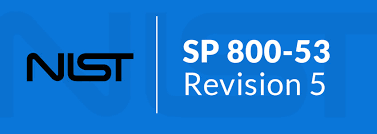NIST SP 800-53 Rev. 5: A Pillar of the Blue Team in Cybersecurity
In the world of cybersecurity, Blue Team defenders rely on proven frameworks to prevent and respond to threats effectively. NIST SP 800-53 Revision 5 is a cornerstone resource, offering comprehensive security controls and built-in privacy protections to harden your systems against evolving cyber risks.


Why NIST SP 800-53 Revision 5 Is Essential for Blue Teams
NIST SP 800-53 Rev. 5 from the National Institute of Standards and Technology provides a comprehensive framework of cybersecurity controls that empower Blue Teams to defend information systems effectively.
Holistic Security Coverage
Technical, Organizational & Human Aspects
Covers everything from network hardening to security policies and staff training.Adaptable Controls
Scale or tailor each control based on your organization’s risk profile and compliance requirements.Privacy Integration
Embeds data-protection measures to satisfy both cyber and privacy regulations.
Core Controls for SOC Analysts & Network Defenders
NIST SP 800-53 Rev. 5 groups its controls into 20 families. Key ones for Blue Teams include:
Access Control (AC): Restrict and monitor access to sensitive resources.
Audit and Accountability (AU): Enable detailed logging and real-time event monitoring.
Incident Response (IR): Define playbooks and procedures for rapid cyberattack containment.
Risk Assessment (RA): Continuously identify, rate, and prioritize vulnerabilities.
System and Communications Protection (SC): Encrypt data in transit and shield critical channels from intrusion attempts.
Example: Improving a Weak Security Posture
Company Profile: “Acme Financial Services” is a mid-sized fintech firm that processes online payments and stores customer data.
Identified Weaknesses:
No Multi-Factor Authentication on remote access (AC-2)
Scant Logging & Monitoring, with only basic Windows Event logs (AU-6)
No Formal Incident Response Plan; ad-hoc reactions slow down recovery (IR-4)
Risk Assessments Done Annually Only, leaving blind spots for emerging threats (RA-5)
Unencrypted Database Connections between web servers and back-end (SC-8)
NIST SP 800-53 Rev. 5 Implementation:
Access Control (AC-2): Deployed an MFA solution for VPN and admin accounts — reduced unauthorized access by 90%.
Audit and Accountability (AU-6): Integrated a SIEM platform to collect logs from firewalls, servers, and applications — achieved 24/7 threat monitoring.
Incident Response (IR-4): Drafted and tested an incident response playbook with clear roles, communication paths, and escalation criteria — cut mean time to containment (MTTC) in half.
Risk Assessment (RA-5): Shifted to quarterly vulnerability scans and risk workshops — uncovered and remediated critical patches within days, not months.
System and Communications Protection (SC-8): Enforced TLS encryption for all internal API calls and database links — thwarted several man-in-the-middle probe attempts.
Outcome: By mapping these controls to their specific gaps, Acme Financial Services transformed from a reactive posture into a proactive, risk-based security program — dramatically improving resilience and regulatory compliance.
Putting NIST SP 800-53 Rev. 5 into Practice
Align with Industry Frameworks
Map controls to the NIST Cybersecurity Framework (CSF) or MITRE ATT&CK for cross-framework synergy.Automate & Monitor
Leverage SIEM and SOAR platforms to enforce controls and trigger alerts on suspicious behavior.Train Your Team
Conduct regular workshops on threat hunting, playbook drills, and security best practices.Test & Audit
Schedule routine penetration tests and audits to validate control effectiveness and uncover gaps.
Conclusion
Implementing NIST SP 800-53 Revision 5 transforms a list of mandates into an operational security blueprint. By adopting these standards, Blue Teams not only boost system resilience but also ensure compliance with evolving regulations.
Is your organization ready to strengthen its Blue Team posture with NIST SP 800-53 Rev. 5? Start mapping these controls today and elevate your cybersecurity program from reactive to proactive.
